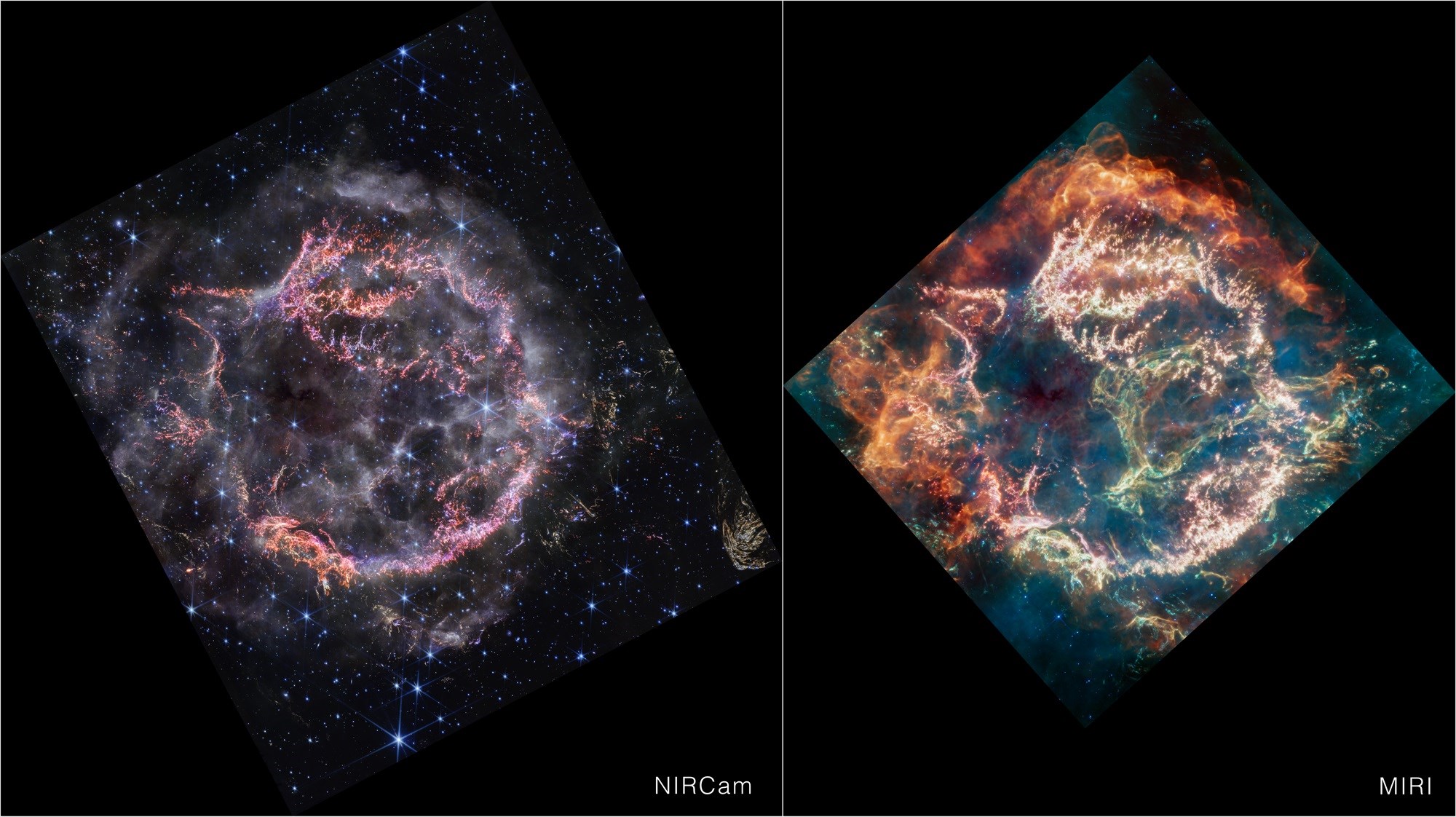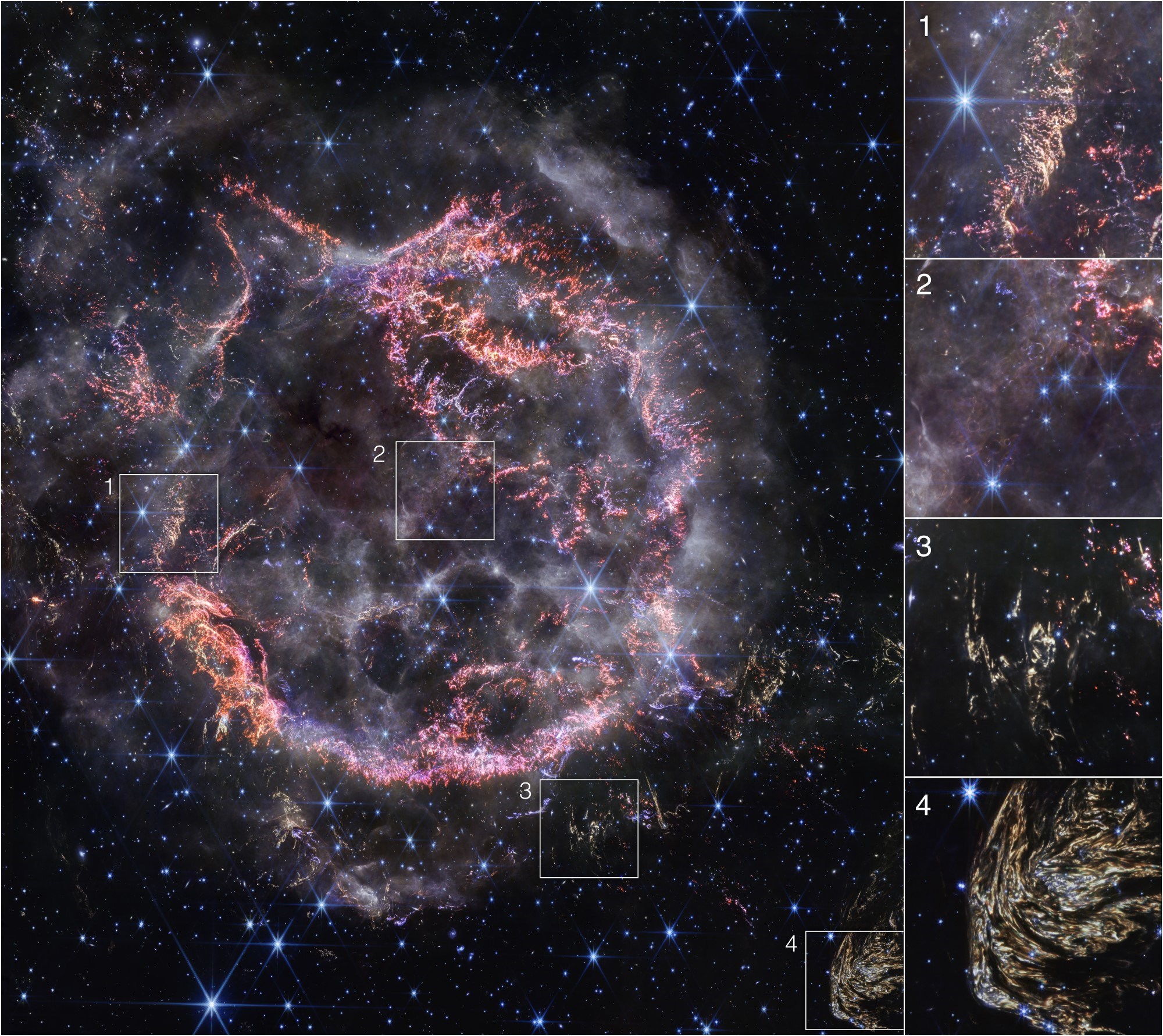 NASA’s James Webb Space Telescope (JWST) has captured exquisite detail about the famous supernova remnant located approximately 11,000 light-years from Earth. Cassiopeia A (Cas A), one of the youngest supernova remnants in the Milky Way galaxy, was formed by the explosion of a massive star approximately 340 years ago. While the death of a massive star is a dramatic event, its remnant plays a key role by paving the way for the formation of new generations of stars.
NASA’s James Webb Space Telescope (JWST) has captured exquisite detail about the famous supernova remnant located approximately 11,000 light-years from Earth. Cassiopeia A (Cas A), one of the youngest supernova remnants in the Milky Way galaxy, was formed by the explosion of a massive star approximately 340 years ago. While the death of a massive star is a dramatic event, its remnant plays a key role by paving the way for the formation of new generations of stars.Cassiopeia A clearly viewed
Because of its proximity to Earth, Cas A has been extensively studied by numerous ground- and space-based observatories, including NASA’s Chandra X-ray Observatory and the Hubble Space Telescope. However, the latest observations from JWST, which is much more advanced than existing telescopes, reveal the most detailed view of this celestial event yet.
A detailed image of Cas A was captured by JWST’s Near Infrared Camera (NIRCam) instrument, providing information about the collision of gas and material that the star ejected before it exploded. High-resolution images will enable scientists to uncover the wealth of scientific information hidden within these vibrant colors, focusing specifically on the dynamic processes taking place within the supernova remnant. The final image of Cas A, colored to represent NIRCam’s different filters, also reveals different activities within the object.
Will form new stars and planets
 “With NIRCam’s resolution, we can now see how the dying star shattered when it exploded, leaving behind filaments that resemble tiny shards of glass,” Danny Milisavljevic of Purdue University, who led the research team, said in the statement. Vibrant colors in the image, especially bright orange and light pink tones, indicate clusters that form the inner shell of the supernova remnant. According to NASA, these gas clusters consist of sulfur, oxygen, argon and neon left over from the star. This gas contains a mixture of dust and molecules that will eventually contribute to the development of new stars and planets.
“With NIRCam’s resolution, we can now see how the dying star shattered when it exploded, leaving behind filaments that resemble tiny shards of glass,” Danny Milisavljevic of Purdue University, who led the research team, said in the statement. Vibrant colors in the image, especially bright orange and light pink tones, indicate clusters that form the inner shell of the supernova remnant. According to NASA, these gas clusters consist of sulfur, oxygen, argon and neon left over from the star. This gas contains a mixture of dust and molecules that will eventually contribute to the development of new stars and planets.This new image also shows some of the supernova’s other intriguing features, such as “circular holes” in an area known as the Green Monster. These holes are vaguely defined by a white and purple glow. “The green ring of light in the central cavity of Cas A, which shines in the mid-infrared and is called the Green Monster by the research team, is not visible in the near-infrared image,” the statement said.